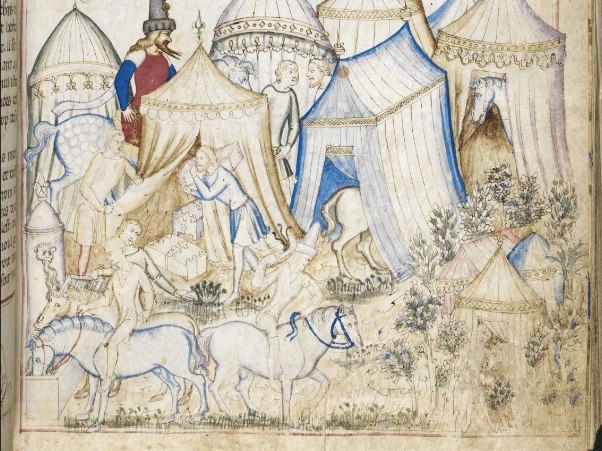Horsemanship Level 2: Routines of the Horse
There are many different equine lifestyles for the domestic horse, from grazing loose on the range 24/7, to kept in a barn with a variety of supplemental feeds, and everything in between. At level 2 we don't expect you to be able to descibe all the various horsekeeping options: you simply need to know the routine of your own horse (or the horse you typically ride).
3. Know the routine of own horse: feeding, grooming, exercise.
Your horse's feeding and exercise regime is dependant on her stabling situation. A horse that is kept on pasture requires very little, if any, supplemental feed, will get sufficient exercise to regulate energy and maintain base condition, but will still require grooming to check for injuries and keep the coat and hooves healthy. A horse that spends most of his time in the stall or paddock will require hay and possibly grain, will need to be exercised daily, but may be easier to groom. Whatever your horse's routine is, be prepared to explain how it relates to the stabling situation.
Here are the questions you'll need to be able to answer:
Feeding
- How does your horse get fresh clean water? Bucket, automatic waterer, trough, stream?
- What is the source of your horse's forage? Grass, hay, or a combination?
- How many times a day is your horse fed hay? How much?
- What type of hay is fed? Local meadow hay, alfalfa, timothy, hay cubes?
- What types of concentrates, if any, does your horse get? Oats, pelleted feeds, beet pulp, cob, etc? How much?
- How does your horse get salt? Block in stall or paddock, granulated, or as part of complete feed?
- Are there any other supplements such as oil, joint or hoof supplements, daily medications etc? How are they fed?
- Does the feed situation change seasonally?
Feed charts in the stable often given rations by volume, such as '1 scoop of pellets' or '2 flakes of hay'. However, it's better to be able to answer these questions in terms of weight, such as '1200g complete pellets' or '3 lbs hay'. If you don't have access to a scale, your barn manager can probably tell you the actual feed weights.
Grooming
- How often is your horse groomed and when?
- When is your horse given a complete grooming, and when is he just quartered or set fair?
- How does the grooming routine differ in winter, spring and summer?
A complete grooming is often done after a ride, when the pores are open and scurf in the coat rises to the surface. Quartering is a quick grooming, usually done before a ride, to check for injuries, clean out the hooves, and make sure the saddle, girth and bridle areas are clean. Setting fair is often done when a horse comes in from the field, or first thing in the morning, and is a quick check for injuries, the adjustment of any clothing, like rainsheets or flymasks, and the removal of any burrs or other pieces of the countryside stuck in manes and tails.
Exercise
- Does your horse get daily turnout? For how long, and in what size of field or paddock?
- If your horse does not get turnout, how does he get daily exercise? Longeing, free longeing, riding, hand-walking?
- How often is your horse ridden?
- How many rides a week are schooling in the arena, and how many hacking out on the trails?
- How often does is your horse entered in shows or competitions?
- How does your horse's exercise vary between seasons?
Exercise has a huge effect on horses' mental states. A horse that is kept in a stall or small paddock will often have too much energy, which makes him 'hot' or difficult to handle. If your horse has variable turnout, you will probably notice she is much calmer when she is getting regular turnout than she is when she is kept in the stall or paddock.
If you use a school horse and aren't aware of all his other activities check with the horse's owner or the barn manager to find out what his daily schedule is.
next: leading at walk and trot
Work Party & Open Barn, Sunday May 19th
Yes, we're having another work party. If you'd like to come out to help fix fences, beat back the blackberries that didn't make it into the bonfires, and get our fields and x-country jumps ready for summer, we'd love to have your help any time between noon and 6pm this Sunday. Refreshments provided!
Open Barn runs from 1-4pm, so if you'd also like to to get some riding, sword practise or just general horse-time in, you are more than welcome! Open Barn is free; use of a school horse, for those approved to ride, is $10.
See you at Red Colt!
Upcoming Cavaliere Dates
Cavaliere Classes
There is one more class in May: this Saturday, 18th May, from 4 - 7:30pm. We then take a week off and resume classes on Saturday June 1st.
Intro to Mounted Combat
Sunday June 2nd, from 10am - 12:30pm is the next Introduction to Mounted Combat. This is the place to begin if you want to get started learning to swing a sword from horseback. The cost for the session is $99. Sign up for the afternoon session of Mounted Combat as well for only $149 for both.
Mounted Combat Workshop
The next Mounted Combat workshop is Sunday June 2nd from 1pm - 4pm.
More Mounted Archery
Here's a video from the Mounted Archery clinic, put together by Monica:
There are more photos of the event as well, which can be viewed on the Red Colt facebook page.
Jennifer Landels, Maestra di Scuderia
Academie Duello Cavaliere Program
